Office and retail vacancies continue to challenge many U.S. cities. But some business leaders, politicians and economic development officials are pursuing turnaround plans for still-struggling city centers and submarkets. To catalyze development and foot traffic, their aims include eliminating chain-store restrictions, counteracting perceptions of out-of-control crime and reimagining the roles of largely vacant department stores and offices, some of which were built in the early 20th century.
Van Ness Avenue, San Francisco
A pending measure in San Francisco would remove chain-store restrictions along a one-mile portion of Van Ness Avenue/Highway 101 between Redwood Street and Broadway. The goal is to make it easier for national chains to backfill vacant space in a part of town that for decades was home to multistory buildings with ground-floor auto dealerships.
Supervisors Stephen Sherrill and Danny Sauter this past January introduced the legislation to ease restrictions along Auto Row on “formula retail,” defined by the city as chains with 11 or more locations. “Van Ness is a highly trafficked city arterial that has been hampered by an outdated planning code,” Sherrill said in an email to C+CT. “This commercial corridor has particularly struggled post-pandemic, leading to over 50% ground-floor commercial vacancy in this stretch of Van Ness. This ordinance responds to this reality by providing flexibility solely to Van Ness so that we activate these storefronts and support struggling property owners.”
Parts of San Francisco like Fisherman’s Wharf and Union Square allow chain stores to lease space without being subjected to a potentially time-consuming planning commission approval process, noted Bay Area broker James Chung, founder and principal of The Econic Co. But national credit tenants tend to think twice about pursuing space in Neighborhood Commercial Districts, where these restrictions do apply, especially if the retailer’s expansion plans include other cities that are free of such restrictions.
“Over the years, I have had multiple, fully executed leases with national retailers, including one with a major national grocer, where I could not get the deal approved because the formula retail contingency was in place,” Chung noted. “It all depends on the neighborhood. There are some communities that fight tooth and nail and others where it is easier to get [chain stores] approved.”
Chung said the proposed legislation could be a good first step to revitalizing the one-mile section of Van Ness, but he noted that infrastructure improvements likely would be essential to broadening the area’s appeal to retailers and shoppers. “The problem currently with Van Ness is that it also is the connector for Highway 101 into the North Bay, and it is not as pedestrian friendly as neighborhoods like Russian Hill, Polk Street or Fillmore Street. Most properties along Van Ness also lack parking.”
Nonetheless, the potential for revitalization is real, said Chung, whose firm represents more than 40 million square feet of retail and about 200 national and regional tenants across the U.S. “There are soft spots around the Bay Area, but the state of retail here is still very strong,” the broker said. “Our deal velocity has been really high.”
Downtown and Central City Portland, Oregon
Business leaders in Portland, Oregon, are eager to get the word out about positive trends downtown and in other parts of the city, which took a reputational hit post-pandemic due to highly publicized problems with crime, drug use, vandalism and political violence.
“Reputation is a lagging indicator,” said Andrew Hoan, president and CEO of the Portland Business Alliance and the Portland Metro Chamber. “The Portland you may have read about or have in your mind is not the Portland of today, and it’s not where we’re headed tomorrow.”
Hoan cited 2024 stats released in February in the Portland Metro Chamber’s 2025 State of Downtown & the Central City report. The results, which rely on Placer.ai data, include:
- a 54% jump in foot traffic from the 2021 low
- a 30% year-over-year increase in visitors to Director Park, a public plaza at 815 SW Park Ave.
- a 28% year-over-year rise in foot traffic in downtown’s Old Town entertainment district. Last year, a new program there featured more than 300 art, music, food and other cultural events.
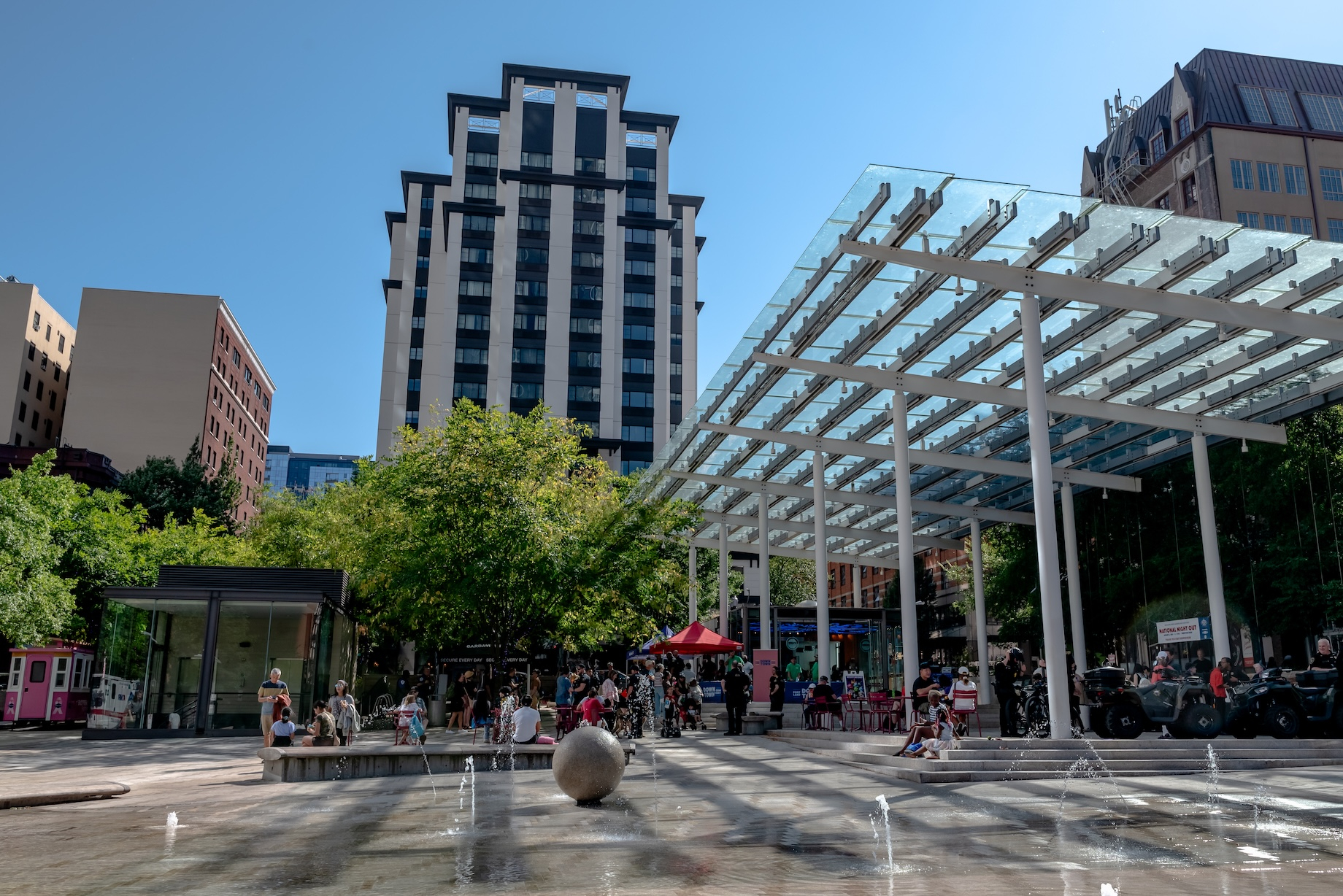
Activations helped drive a 30% year-over-year increase in visitors to Portland, Oregon’s Director Park in 2024. Photo courtesy of Downtown Portland Clean & Safe. Photo credit: Elle Hygge
Responses to a survey of local business owners by the Downtown Portland Clean & Safe District suggest that other trends are heading in the right direction, as well. Surveyed this past January, 322 respondents answered questions about their experiences as business owners in 2024. They reported that:
- theft or shoplifting at their businesses decreased 16.8 percentage points from 47% in 2023 to 30.2% last year
- employees quitting due to safety concerns declined 16.6 percentage points from 45.8% to 29.2%
- the need to repair broken windows or other physical damage to businesses declined by 20 percentage points from 67% to 47%
That is not to suggest that things have fully recovered. The authors of the downtown and Central City report write that Portland stands at a “pivotal moment” and call for reengaging residents and cultivating “a new mix” to drive higher foot traffic. They observed that in Central City neighborhoods like University/South Downtown and the South Waterfront, foot traffic is nearly back to pre-pandemic levels. However, foot traffic in the Downtown neighborhood is still down about 40% from those pre-pandemic norms.
Business leaders attribute the gains to a full-court press on turning things around, from recriminalization of street drug use to bringing in “safety coordinators” from a private security firm. “Portland is a welcoming, inclusive and diverse city, but the community here had basically reached the point where enough was enough,” said Steven Fang, owner of Flock food hall at Block 216, a downtown mixed-use project that includes the newly built Ritz-Carlton, Portland luxury hotel. “The city is getting cleaned up.” Flock, which opened in February, offers cuisines from around the globe. Its food outlets include ZabPinto Thai Kitchen, BB.Q Chicken, Queen Mama’s Kitchen, Pan Roast, Tous les Jours, Birrieria La Plaza, HK Cafe and Prime Tap House.
Fang said foodie destinations like this can be a draw for locals and tourists, helping offset lost office foot traffic. “We wanted to showcase some of the best food and beverages that the city has to offer. That’s not just with our own kitchens. We’re actively working on programs for other local restaurants to come and do pop-ups, as well.”
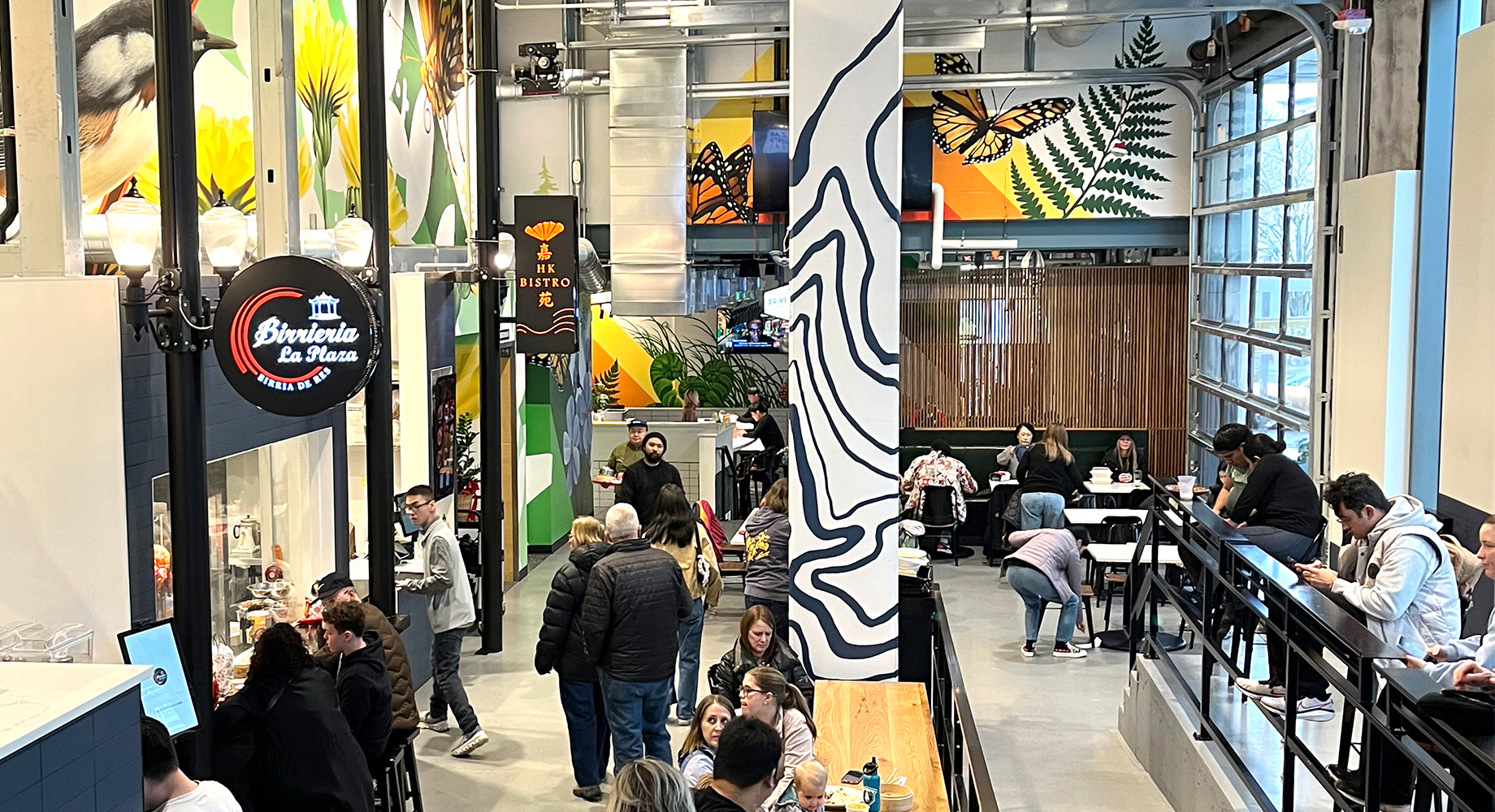
Designed by Oculus Inc. and Woodblock Architecture, the recently opened Flock food hall in Portland is part of the downtown mixed-use Block 216 project that includes the newly built Ritz-Carlton, Portland hotel. Photo credit: Oculus Inc.
As Hoan sees it, openings over the past couple of years by operators like Din Tai Fung, a Taiwanese restaurant known for its soup dumplings and noodles, and the members-only club Soho House show that momentum is building in the city. The same is true, he said, of new and ongoing retail and real estate projects. “We are on the doorstep of opening the James Beard Public Market here in our downtown core and Nike’s flagship store is being reinvested in, reimagined and rebuilt in the center of the city, so you have a big vote of confidence on the retail side from Nike, which we absolutely love.”
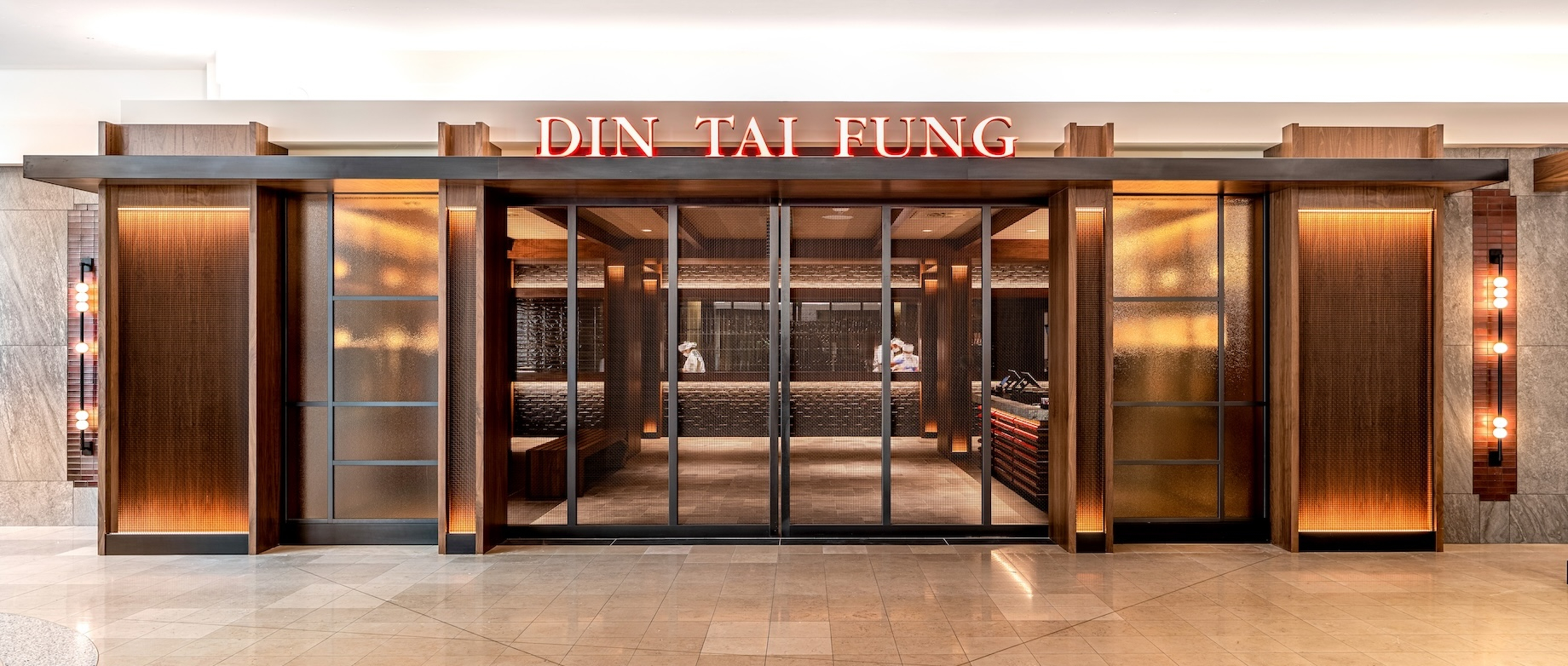
Economic development officials say more businesses are choosing to locate in Portland, Oregon. Din Tai Fung, a Taiwanese restaurant chain known for its soup dumplings and noodles, opened in Brookfield Properties’ Pioneer Place mall downtown in 2023. Photo courtesy of Din Tai Fung
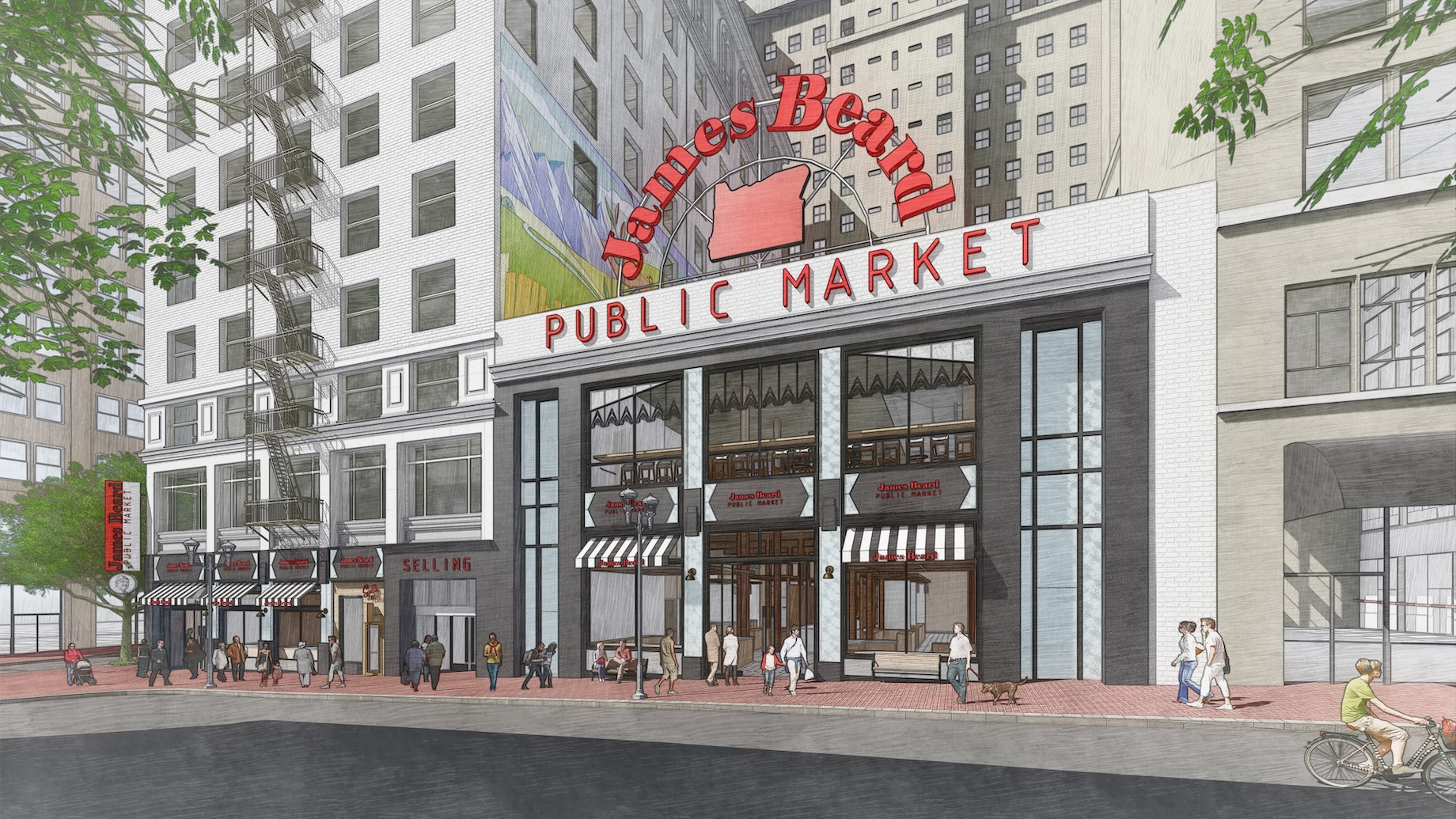
Slated to open later this year, downtown Portland’s indoor/outdoor James Beard Public Market will offer an array of food-and-beverage vendors, with a strong emphasis on local sourcing. Rendering courtesy of James Beard Public Market. Rendering credit: BCV Architects.
Market East, Philadelphia
Philadelphia’s Market East has had some tough news since the start of the year. The 76ers NBA team canceled plans to build a $1.3 billion arena there, and Macy’s Inc. announced it would close its Macy’s store in the 114-year-old Wanamaker Building.
The center-city commercial core runs from City Hall on the west to 7th Street on the east, hemmed by Arch Street on the north and Chestnut Street on the south. Generations of Philadelphians have shopped and enjoyed holiday light shows at the Wanamaker Building, described by the National Trust for Historic Preservation as “a sight to behold” thanks to flourishes like a seven-story, marble-lined atrium, a 2,500-pound bronze eagle and “the largest pipe organ in the world” with 28,750 pipes.
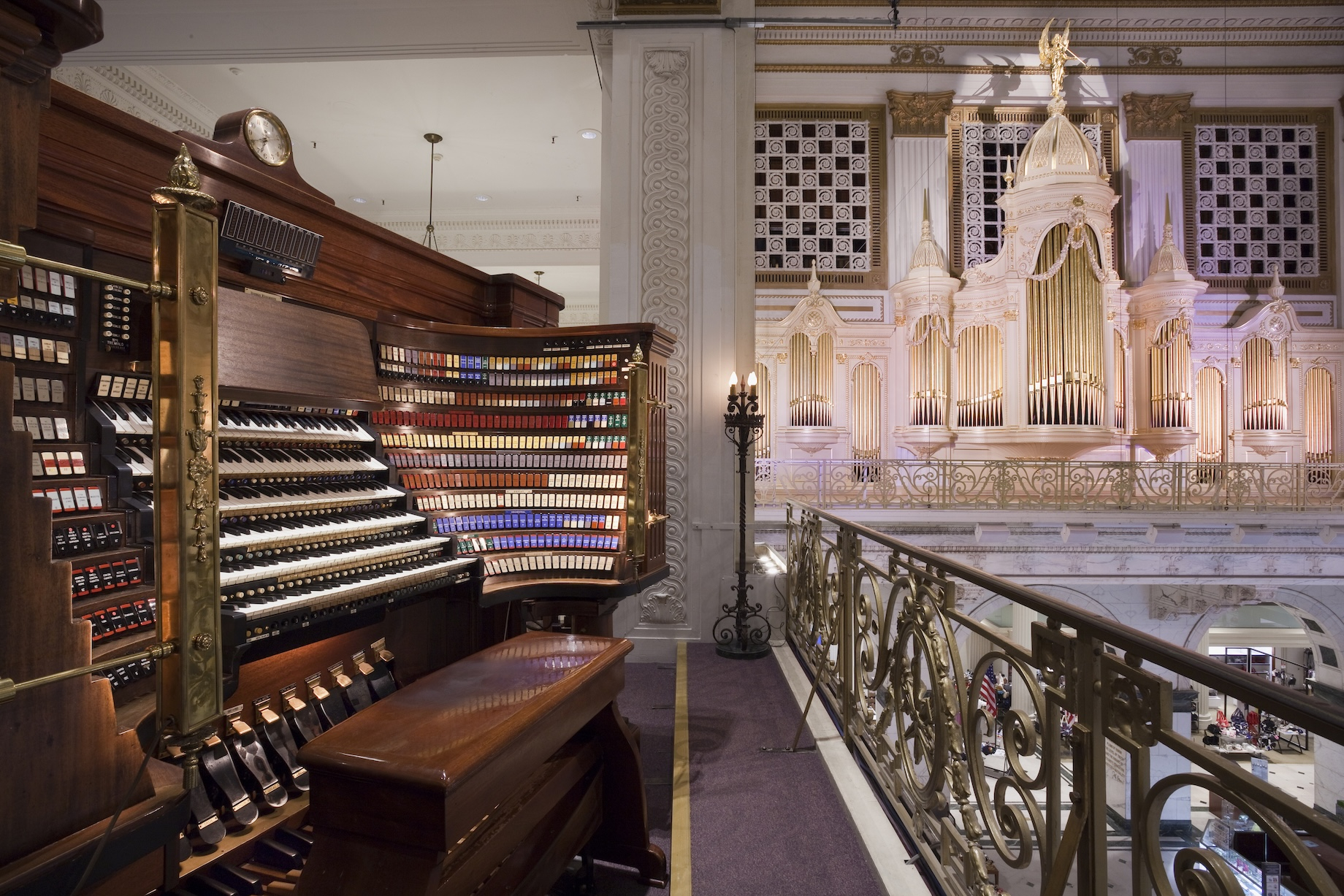
Above is the massive pipe organ in the Macy’s store in Philadelphia’s 114-year-old Wanamaker Building. According to local brokers, the historic building’s future is of intense community interest. Photo courtesy of Friends of the Wanamaker Organ/wanamakerorgan.com
That rich history is part of the reason so many Philadelphians care about the future of Market East, said Newmark executive vice president and Greater Philadelphia market leader Lauren Gilchrist. “It was really the heart and hub of shopping in Philly in the early 20th century,” she said, “and it has remained an important part of downtown.”
Leading up to the pandemic, about $3 billion in private capital poured into Market East for retail and mixed-use revitalization projects. One example is the 2019-announced PREIT-Macerich transformation of The Gallery Market East mall into Fashion District Philadelphia, now fully owned by Macerich. Gilchrist also pointed to National Real Estate Development’s East Market, a multiphase redevelopment covering a city block. Its $400 million first phase, which was completed in 2018, boasts 126,000 square feet of retail, 562 rental apartments and 175,000 square feet of office.
Market East was at the forefront of office conversions long before today’s office-to-residential conversion trend. “In the last 30 years, we have seen about 9 million square feet of obsolete, outdated office converted to apartments, as well as hotels,” Gilchrist noted. At the Philadelphia Historic District’s Bourse building, Keystone Development and Lubert-Adler are converting 97,885 square feet across three floors into a 161-key boutique hotel. The development will add a 5,000-square-foot, street-level restaurant and cafe and will modernize 157,546 square feet of office on five floors, per a project website.
At the end of 2024, office vacancy in Market East was just over 23%, compared with 20.3% nationally, according to Newmark’s 2024 National Office Market Overview. “I cannot say that Market East office vacancy will improve substantially, but it likely will begin to improve as more office buildings are taken offline,” Gilchrist said. “Some of the hotel improvements are really going to be helpful, as well, to the ongoing demand for retail. There are reasons to be optimistic.”
Obstacles to revitalization include large spaces and long blocks at the likes of the Wanamaker Building and Fashion District Philadelphia, noted Newmark head of retail capital markets research Brandon Isner. “Urban retail spaces that are larger than 20,000 square feet generally have a higher availability rate,” he said. “It is a challenge across the U.S.”
Nonetheless, historic districts like Market East can be strong candidates for reinvention, Isner said. “Most times, they were built long before the rise of the automobile, so they were just naturally designed for pedestrians meandering. That better feeling and environment can be great for emerging brands.”
By Joel Groover
Contributor, Commerce + Communities Today